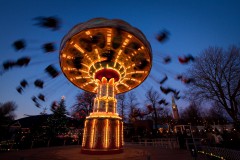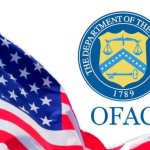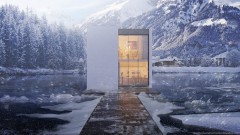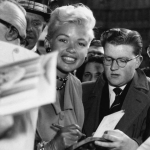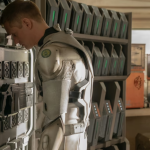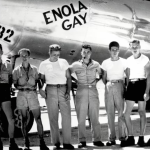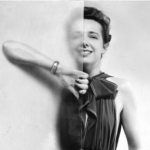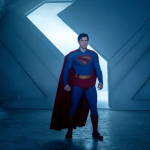Thousands of tadpoles are sleeping inside oxygen and water bags at the Brookfield Zoo near Chicago, waiting to be transformed into what the Chicago Tribune has already dubbed “celebrity amphibians.” The sapo concho was on the verge of going extinct a few months ago. Because of invasive species and habitat loss, the native Puerto Rican toad has long been in danger of extinction on the island.
However, the concho was discovered by fame and then fortune: A cartoon concho appears in Bad Bunny’s most recent album, Debí Tirar Más Fotos, which was released in January along with a short film of the same name. The Brookfield Zoo’s long-standing conservation efforts received a media boost following the record’s chart-topping release, and donations were made to the Puerto Rican Crested Toad Conservancy in support of a new breeding center on the island.
Additionally, the concho gained admirers all over the world, particularly from those who identify with its plight as similar to their own and have adopted it as a symbol of tenacity. Bad Bunny’s extensive DTMF project, along with its toad emissary, has become a global anthem for people who are displaced.
For example, Bad Bunny’s song “Lo Que Le Pasó a Hawaii” (“What Happened to Hawaii”) is a prophetic lamentation in which he urges Puerto Rico not to become like Hawaii, referencing the gentrification and cultural erosion that have accompanied Hawaiian statehood. In addition to Puerto Ricans, Native Hawaiians, Dominicans, Costa Ricans, and Ecuadorians have all closely read and covered the song, pointing out the parallel struggles of their own land.
Some journalists have referred to the album’s nostalgic title track, “DTMF,” which includes the chorus “I should’ve taken more pictures when I had you,” as the “unofficial anthem of the Palestinian people” and the “soundtrack for Gaza’s visual archive.” It has been used on social media to accompany videos of life in Gaza and Lebanon prior to the events of October 7. A discordant chorus of voices on “DTMF,” resembling an unearthly band of ancestors, sing, “I hope my people never move away.”
However, the most moving examination of displacement in the DTMF project is found in the 13-minute Debí Tirar Más Fotos short film, which Bad Bunny co-wrote and co-directed with filmmaker Arí Maniel Cruz Suárez. Similar to the pain of a phantom limb, it speaks to the sense of slowly losing one’s homeland and the threat of cultural erasure that befalls dispossessed people everywhere.
This idea, which is frequently discussed in dry academic jargon, is brought to life in a particularly creative way in Bad Bunny’s film: He immerses the audience in a sensory-deprivation tank depiction of Puerto Rico, where the sights and sounds that characterize the island’s culture appear to be disappearing.
According to Debí Tirar Más Fotos, Puerto Rico loses what makes it unique—its music, culture, and people—when its politicians ignore environmental catastrophes and give preference to foreign investors over its citizens, as Bad Bunny has frequently pointed out. The movie uses the analogy of an elderly man and a toad to emphasize this tension.
The characters are more symbolic than specific; they are the kind of stand-ins that anyone who has been displaced can identify with. The man (played by Jacobo Morales), who is only identified as “Señor” in the credits, appears to be one of the few Puerto Ricans remaining in his unnamed neighborhood. An anthropomorphic representation of the endangered amphibian is his friend Concho.
The movie implies that the two together stand in for the human and nonhuman Puerto Ricans who are being driven from the island due to a number of reasons, including social injustice and bad governance.
For Bad Bunny, displacement is not a novel topic: “What belongs to me, they’ll keep it to themselves” and “This is my beach, this is my sun / This is my land, this is me” are the choruses of the artist’s 2022 song “El Apagón.” The journalist Bianca Graulau created a 22-minute documentary for his music video, which focused on how tax breaks have made it simple for investors to purchase real estate, outbid residents, and create upscale rental properties throughout Puerto Rico.
These criticisms are supported by Bad Bunny’s lifelong love for the island, which has been emphasized in his most recent appearances to promote his most recent album. Consider his May performance on Saturday Night Live, where he projected a Puerto Rican flag onto the stage, or his upcoming summer residency in San Juan, which is appropriately named “No Me Quiero Ir de Aquí” (“I Don’t Want to Leave Here”).
However, the Debí Tirar Más Fotos short film does a fantastic job of capturing cultural upheaval: Bad Bunny transports viewers to an unbalanced dreamscape—a Puerto Rico with hardly any Puerto Ricans—instead of depending on headlines, as in the music video for “El Apagón.”
The neighborhood of Señor and Concho resembles an abandoned Epcot replica of the island. Pastel colors fill the deserted streets. Señor walks to the neighborhood bakery to grab a treat, but all he sees are two young English speakers looking at their phones for directions and a football-playing, grilling family with a southern accent whose patriarch gives him a “get off my lawn” look.
The café, named the Flamboyán Bakery after Puerto Rico’s famous flame tree, has a mildly Caribbean feel to it and sells out of its vegan version of the quesito pastry very fast. Its staff and customers hardly ever speak Spanish, and its menu is in English.
Señor is informed that the store is a “cashless environment” when he attempts to pay with cash. The viewer might become confused by all of this and wonder if this is actually Puerto Rico. Additionally, the first act of the movie doesn’t contain a single salsa or reggaeton song, which could further confuse viewers. Señor passes only English-language country and emo-rock songs.
The longing plucks of a bolero song (a snippet of “Turista,” from Debí Tirar Más Fotos) don’t begin to play until two-thirds of the way through the movie, after the old man has returned home from the expensive café. It paints a tiny, more traditional picture of Caribbean life: Señor cuts bread, pours his cafecito into a small green cup, and sets a moka pot on a gas stove.
The bolero riffs return like an emotional tidal wave, filling the mostly silent streets with sound after a long, eerie absence—and amidst the town’s general strangeness. Señor appeared uneasy at the bakery, where he had to speak halting English; however, he appears relaxed at home, where swooning traditional music scores his daily tasks.
In a neighborhood that seems to be rapidly losing its cultural identity, his home turns into a haven of local Puerto Rican music. This sparse usage of Caribbean music seems deliberate: Bad Bunny suggests that silence is one consequence of gentrification.
During the DTMF album, Bad Bunny bemoans the fact that many Puerto Ricans have been compelled to flee the island due to economic hardships and natural disasters like Hurricane Maria. This is particularly evident on the song “Lo Que Le Pasó a Hawaii,” where he states that “no one here wanted to leave, and those who left dream of returning.”
(As of 2018, a greater proportion of Puerto Ricans reside outside of Puerto Rico than on the island; the same is true for Palestinians and native Hawaiians in their respective territories.) Their absence is evident in the DTMF short film.
“Have you heard that? When a red sedan passes their front porch playing reggaeton (Bad Bunny’s “Eoo”), the elderly man exclaims to Concho, ‘That music!’ The elderly man is moved. Regarding the car slinking by, he remarks, ‘You hardly see that anymore.'”
“I miss the sound of the neighborhood—the motorcycles, the young people hanging out.” Now that the majority of the Puerto Rican residents have left, it appears that Señor and Concho live in a community that has turned down the volume.
But for Puerto Ricans on and off the island, as well as any other group going through similar struggles, Bad Bunny presents one potential means of fending off the cultural erasure that can come with relocation. The idea is to proudly promote their traditional symbols and music.
The DTMF album, which is filled with imperative lyrics like “Don’t let go of the flag nor forget the le-lo-lai”—a lyrical scat frequently used in jíbaro music, a folk genre that originated in the Puerto Rican countryside—is woven with this idea.
Concho and Señor, the island’s everymen, set an example of cultural pride as the accompanying movie closes on a similar note. Concho proposes that his friend drive around blaring some perreo bops to break up the eerie silence in the neighborhood.
Though only as a fantasy, the elderly man considers this possibility. He visualizes himself driving a Jeep with the windows down. He is blaring “Veldá” by Bad Bunny across the deserted, hilly streets.
The old man tells Concho that “seguimos aquí,” which is a triumphant and defiant vignette. We remain here.

